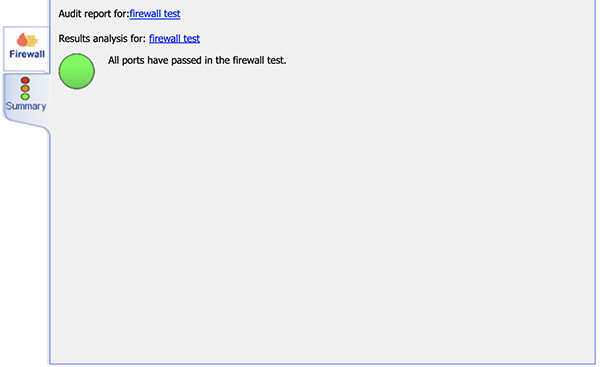How does the test work?
For TCP ports, the firewall test evaluates the accessibility of a port on the server.
- If the port has a listening application (mandatory) and is approved by TCP at the destination, the client's open request will successfully bind to the port.
- If the port has no listening application, the MyConnection Server solution will automatically listen on the requested test port just before the port is used by the test. This process is similar to making a phone call: when the test attempts to connect to the specified destination port, someone must be listening for the ringing phone. If the port is listening (available) and able to accept incoming connections (Firewall), TCP will respond by allowing the connection, thus confirming the port is open.
- During a connection request from a client, the request originates from a random high-numbered port, usually above 16,000. The server's response to the client connection request is approved, thereby validating the open port. No data is required to validate the connection approval. If the connection is declined by the destination, the test reports the port as blocked.
For UDP ports, the firewall test cannot connect to the port, so the ability to send and receive data packets is required for the port test.
- If the port has a listening application and is approved at the destination, the client will send the number of packets (all at once) to the destination. The return of any one packet confirms the port is open and available.
- If the port has no listening application, the MyConnection Server solution will automatically listen on the requested test port just before the port is used by the test. MyConnection Server responds by returning arriving packets. At least one packet must be returned to confirm the port is open. As UDP packets are loss-tolerant, it is advisable to configure the test for five or more packets so lost packets are less likely to cause a false negative.
- Like TCP, during a connection request from a client, the request originates from a random high-numbered port, usually above 16,000.
Fig 1. Firewall test user interface before test start
Completed Test
Once the test has completed the applet will show how many ports were found to be open and how many were found to be blocked.
Fig 2. Firewall test user interface after test finish
Summary Tab
The summary tab gives an overview of the test results.
This is simply a cound of how many ports failed/passed the test.
Fig 3. Firewall summary tab


